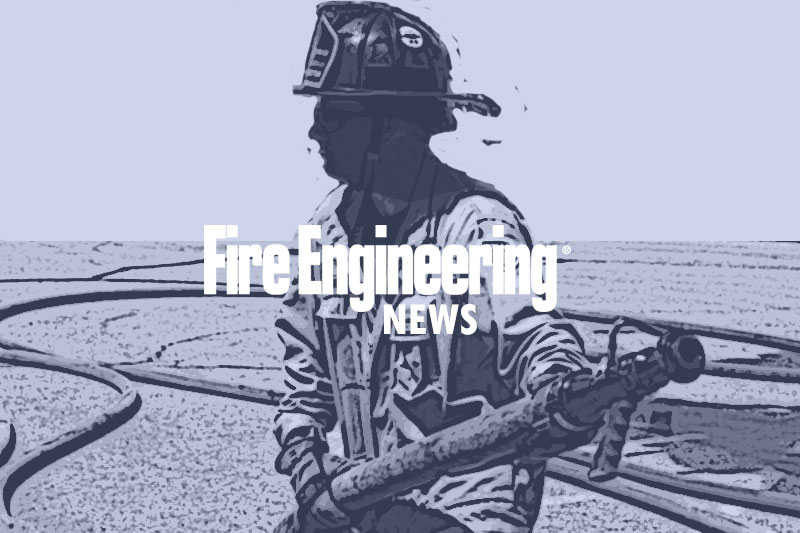Turn to the front page of the Boston Globe on any given day and you’re guaranteed to see a photo from a fire in the city of Boston. The first thing you’ll notice are ground ladders deployed across the entire building and to every window. This is affectionally known as the “Boston yard sale.” So why aren’t those same ground ladders showing up in photos from your last fire?
Ground Ladders
Ground ladders such as the 24-foot extension and the 14-foot roof ladder are commonly carried on our fire engines. So let’s talk about our weapons of choice.
The 14-foot roof ladder is best suited for porch roof access, working on pitched roofs, and second-story window access and rescue, but sometimes has a steep angle for that height. The 24-foot ladder is best used for second- and third-floor windows, with most ladders perfectly fitting second-story residential windowsills when a ladder’s fly is extended two rungs or “two clicks.” With the fly bedded, most 24-foot ladders have a closed length of 14 feet. The weight of ladders from the two main firefighting manufacturers range from 72-75 pounds for a 24-foot ladder to 28-42 pounds for a 14-foot ladder.
The Facts
The Firefighter Rescue Survey (FRS) (1) gives us a detailed look on ladder usage and rescues. Out of the “first 4,000 rescues” from FRS:
- 12.51% (503 rescues out of 4,021 total) victims were found on the floor above the fire floor
- 2.14% (86/4,021) victims were located greater than first floor above the fire floor
- 44.76% (1798/4,017) victims were in bedrooms, a room typically with at least one or two windows for access
- Vent-enter-search (VES) accounted for 18.68% (499/2,671) of rescues, although it’s unknown how many were from a ladder-initiated VES
Victim Removal
- Removal from a window to a ground ladder accounted for 39.33% (573/1,457) of rescues with a much higher survival rate of 87.15% (495/568)
- Removal from interior stairs had only 71.45% (388/543) or exterior stairs 76.92% (100/130) percentage of survival compared to ground ladders
These numbers prove that victims are frequently found above the ground floor and best removed from those environments via windows to improve their chances of survival.
- Ladder Placement Tips and Tricks: Moving Past Minimum Standards
- Truck Company Ops: Ladder Angles
- Firefighting Basics: Ladder Tip Positioning
- The Halyard: The What, the When, and the How
Deployment
One of the biggest questions asked is “Fly in, or fly out?” While both manufacturers recommend proper positioning with the fly section facing out, only one manufacturer has publicly reported that a fly-in position would only reduce their safety factor by only 4%. (2) Having the fly section out allows for an easier transition when bringing the unconscious victim down, slides easier, and won’t get hung up on the lower section (lip) where the ladder’s sections meet. Victims’ clothes can get caught or hung up if we position with the fly section in, as can firefighters’ self-contained breathing apparatus (SCBA) straps and flashlights if we are in a firefighter removal situation.
The next question is: “high-shoulder or low-shoulder carry?” While the answer is certainly a personal choice, here are some thoughts. The high-shoulder carry works great since it’s in a higher-up position for spiking the ladder, and on some apparatus the ladder chutes empty out to a high-shoulder height (depending on your shoulder height). The disadvantage is that it requires balancing and an “active” carry, where firefighters must balance and hold the ladder with both hands. The low-shoulder carry, my preferred method, allows for an almost hands-free carry, which gives us the ability to carry tools and use our radio—two important tasks when we’re talking about victim rescues. With some practice, the transition from low-shoulder to ladder spike is almost seamless and nearly as quick as the high-shoulder carry. The low-shoulder carry also allows easier transportation and offers less chance of hitting low tree limbs. It enables firefighters to more easily walk beneath a deck or balcony and travel down a flight of stairs or through a low passageway to the rear yard.
Positioning
Ground ladder deployment for victim rescue and ladder work requires an angle of 75° as recommended by the manufacturer for maximum load-carrying capacity (3). This manufacturer reports a maximum extension ladder loading of 750 pounds. The 75-degree angle is best suited for victim removal and VES, while an exaggerated angle is better suited for firefighter emergency egress (headfirst ladder slide).
Ladder positioning for rescues should aim for the tips of the ladder at or just below the sill of the window. Having the tips penetrate inside the window can cause difficulty in removing the victim. The ladder’s tip can be pushed away from the building during the transition and the victim’s clothes or body can get caught on the tip. This positioning is ideal for VES, victim removal, and firefighter emergency egress and creates a seamless transition to the ladder.
Victim Removal
Victim drags are a personal and situational choice. The best chance we can give unprotected victim at survival is keeping the person’s head as low as possible and dragging the person by the feet. This feet-first positioning sets us up for success when getting the victim ready for a window removal. After finding a victim and searching around the person for the possibility of multiple victims (in 66.85% out of 718 multi-victim rescues, there were multiple victims found in found in the same room/vicinity), we need to quickly decide the best route for victim removal and call for a ladder to the window early.
Once dragged to the window, orient the victim’s feet toward the wall underneath a window and get them flat on the floor. Work to get the victim’s hips as close to the individual’s feet as possible to allow us to use the victim’s body mechanics to our advantage. It’s important to keep the victim’s knees together as best as possible and not let them fall to the side. While holding the victim’s knees together with one hand, we must smoothly lift the person’s head and shoulders and quickly transition ourselves behind the victim with our hands on the lower part of the person’s scapula. The key to window removals of an unconscious victim is using the person’s body and large leg bones as a spring by pushing the victim forward into the wall rather than trying to deadlift the person. The other partner in the window will grab the victim’s wrists and act as a guide to bring the victim’s body and torso over the sill. On a “ready, go” signal, the firefighter should push the victim forward from the base of the scapula while the other rescuer guides the victim up and over. Throughout this quick movement, we must be sure to capture any forward progress by using our bodies as a capturing device.
Once the victim’s torso (and hopefully hips) are balanced on the window, we must start the process of getting the person onto the ladder. This coordination will be led by the ladder rescuer, who will guide the victim’s body out and onto the beam of the ladder. The victim’s head and neck should land on the arms of the rescuers who are holding the beams. The interior rescuer will then lift the victim with the victim’s legs crossed and guide the person over the window and onto the other beam, ultimately holding on to the victim until the ladder rescuer has a firm grasp between the victim’s legs and the victim is balanced in the rescuer’s arms. Slowly climb down the ladder via the beams, keeping your body close to the victim. This allows the rescuer to secure and pin the victim should the rescuer feel like he or she is starting to “lose” the victim, or if you need to readjust the victim or take a short break.
The tactics for victim window removal also apply to firefighter window removal, with some minor adjustments for SCBA should a Mayday occur.
The Big Game
Every day could be our “big game.” Every fire and victim rescue will be different, but we can use the data from the FRS to make better split-second decisions and to ensure better survival rates for the citizens who rely on us. Using data allows us to create pregame decisions and practice them often. While there may not be a perfect play for the big game, we can pick the best one for our citizens and hopefully win our championship—making the grab and saving lives.
REFERENCES
- Firefighter Rescue Survey – The First 4000 Rescues. Firefighter Rescue Survey. https://www.firefighterrescuesurvey.com/the-first-4000.html
- Subject: Fly In verses Fly Out. Duo Safety. Retrieved from https://www.duosafety.com/pdfs/Flyout.pdf
- Safety Handbook – Alco-Lite. Alco-Lite. https://fireladder.com/wpcontent/uploads/2022/10/Fire-hand-Book.pdf



